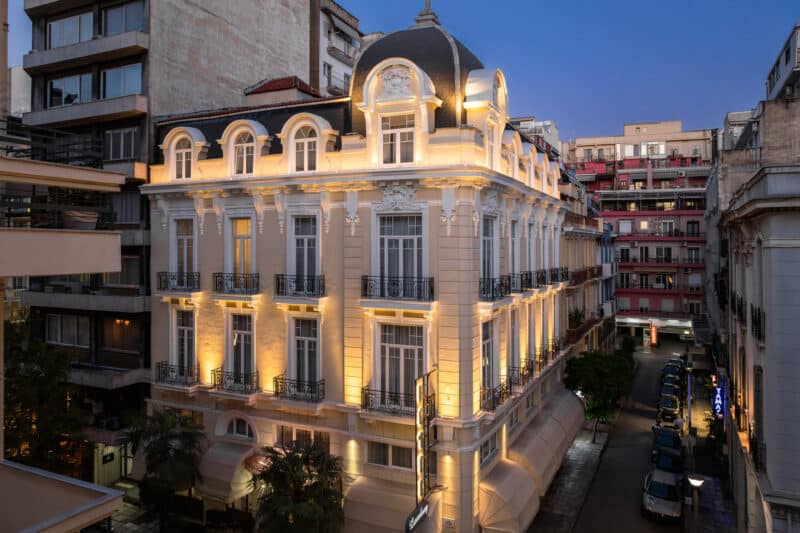There are countless ways to illuminate an outdoor space. Whether it is a garden, a courtyard, a balcony or a large landscaped area, there are many combinations. Depending on the use and scale of the particular outdoor space, the character we want to give to it and the personal style that the user brings, there are numerous and interesting scenarios that we are able to create.


When we are called upon to design the lighting of an outdoor space, we are actually called upon to bring it to life at night. Diversity and intensity are vital elements in shaping a special space, as opposed to the monotony that a single mode of lighting can bring.
An outdoor space is divided into individual notional zones, making it easily manageable in terms of both design and lighting, but also approachable, as it ceases to be chaotic and becomes a familiar and intimate environment. These zones are shaped by use, materials, textures and many other factors.
Different categories of lighting fixtures, offer different qualities of lighting, which makes any space attractive. Some of the most representative ones are presented below.
Highlighting planting
The classic way to highlight planting, whether high or low, is with projectors. However, there are other categories of lighting fixtures, such as uplights or bollards that can be used for the same purpose. The choice depends on the type of planting we have and the final result we want to achieve.
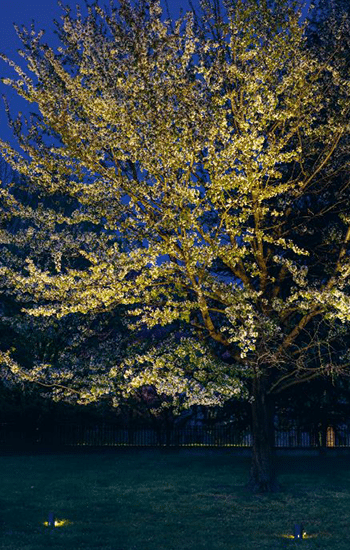
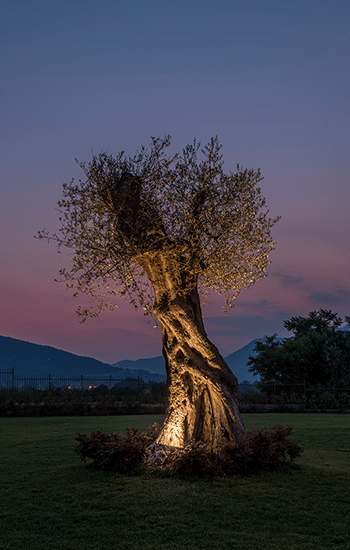
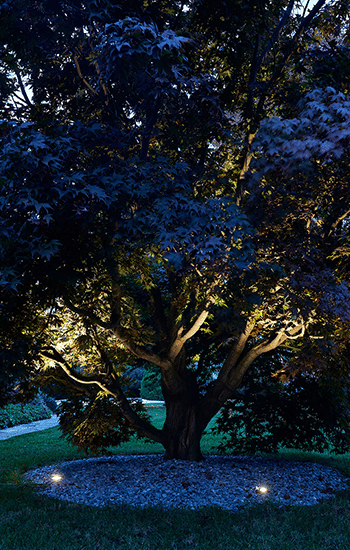
In an attempt to integrate artificial lighting smoothly into the natural environment, in a way that leaves no imprint on it, the modern lighting fixtures that are produced have an appearance and certain characteristics (flexibility, motion, etc.) that refer to specific types of plants, such as corn stalks.


On the other hand, when we design the lighting of an outdoor space, we also design the atmosphere we want it to exude. The way in which we will apply the lighting contributes significantly to this. Two interesting lighting applications, although diametrically opposed, are with bollards (moonlight effect) and with projectors (aggressive effect).
In the first application, the lighting is from top to bottom with the help of bollards, creating the moonlight effect. The result is a soft and uniform lighting, which exudes calm and romance.
In the second application, the lighting is directed from bottom to top with the help of small projectors, allowing for a more scenographic depiction of the space. This lighting gives a more aggressive effect, as it contrasts with the way we are used to reading natural light, which means from top to bottom.
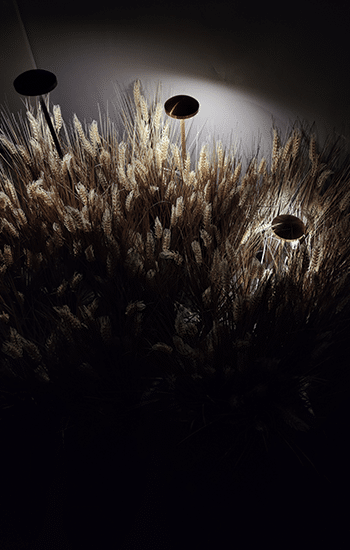
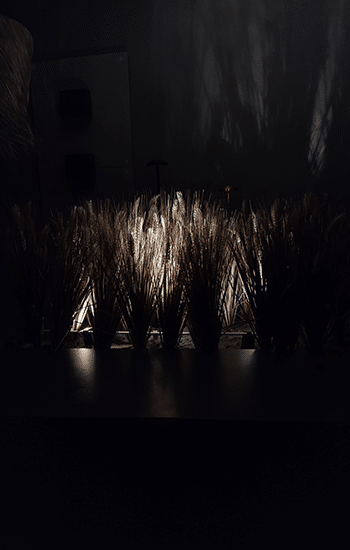
Steplights
Steplights are actually wall-mounted or recessed small-scale lighting fixtures that serve to maintain our orientation. They are placed at key points, such as around the perimeter of a building. It would be more accurate to say that they function as security lights, in case there is insufficient lighting to perceive the boundaries of the building.

Another frequent use of steplights is in staircases and pathways, which enhance the perception of a space, giving us a feeling of security and confidence in our steps.
Steplights are really small drops of light, but vital. As we have already mentioned, in outdoor lighting it is not quantity but quality that matters. If they are installed in the right places, they act as lighthouses that show us the way.


Bollards
Bollards are another category of lighting fixtures that are mainly classified in the lighting of paths and trails. Depending on the surface on which they will be placed, whether it is a hard surface, such as concrete, or a soft surface, such as soil, they have the appropriate accessories, such as base or spike respectively.


In the outdoor lighting design it is very important to know the materials and textures, as this information shows us the way to the right choice of lighting fixtures in the right places.



Uplights
Uplights or linear luminaires aim to highlight the façade of a building or the texture of a surface in general. They indicate the key position that a space may have, such as the entrance of a building, making it the most important element. In addition, an uplight can be used to emphasize a corner, or to “outline” an opening. Several uplights together give a more theatrical effect, while on the other hand a linear luminaire gives more uniformity and overall highlighting of the building rather than its individual points.





Wall sconces
Wall sconces, with lighting beams for a more dramatic and intense effect or diffused for more diffusion and a smoother effect. Their size, geometry and placement play a very important role in the final result. The architecture of the space, both interior and outdoor, is called upon to co-operate with the lighting for an even and balanced effect or even to create contrasts, composing a heterogeneous yet interesting scenery.



Cove lighting
Cove lightings act as supplementary lighting. They are not essential, but since they add an atmospheric mood they always have a special place in the outdoor lighting design. They emphasize geometries, delineate volumes, such as partitions, furniture, in the most subtle and gentle way, while highlighting textures and materials.
In conclusion…
The lighting applications are countless, while the combinations and scenarios we can create are varied. We will always find different ways to design the outdoor lighting, as long as we read the space and the needs that arise each time. Through constant recompositions and experimentations, our critical thinking is cultivated and our imagination is stimulated. These are two very powerful weapons that if we have them at our disposal then the final result will really justify us.
The outdoor lighting is a perpetual process of thinking, composition, creativity, it sharpens the mind, keeps us alert and that is where its magic lies. By completing the lighting we are in essence putting the finishing touches on a canvas we have composed ourselves and we are finally ready to enjoy our work. Not only as spectators, but to penetrate this canvas and live within the setting we have created by ourselves.
Text editor: Myrto Tempelopoulou – Lighting Consultant



